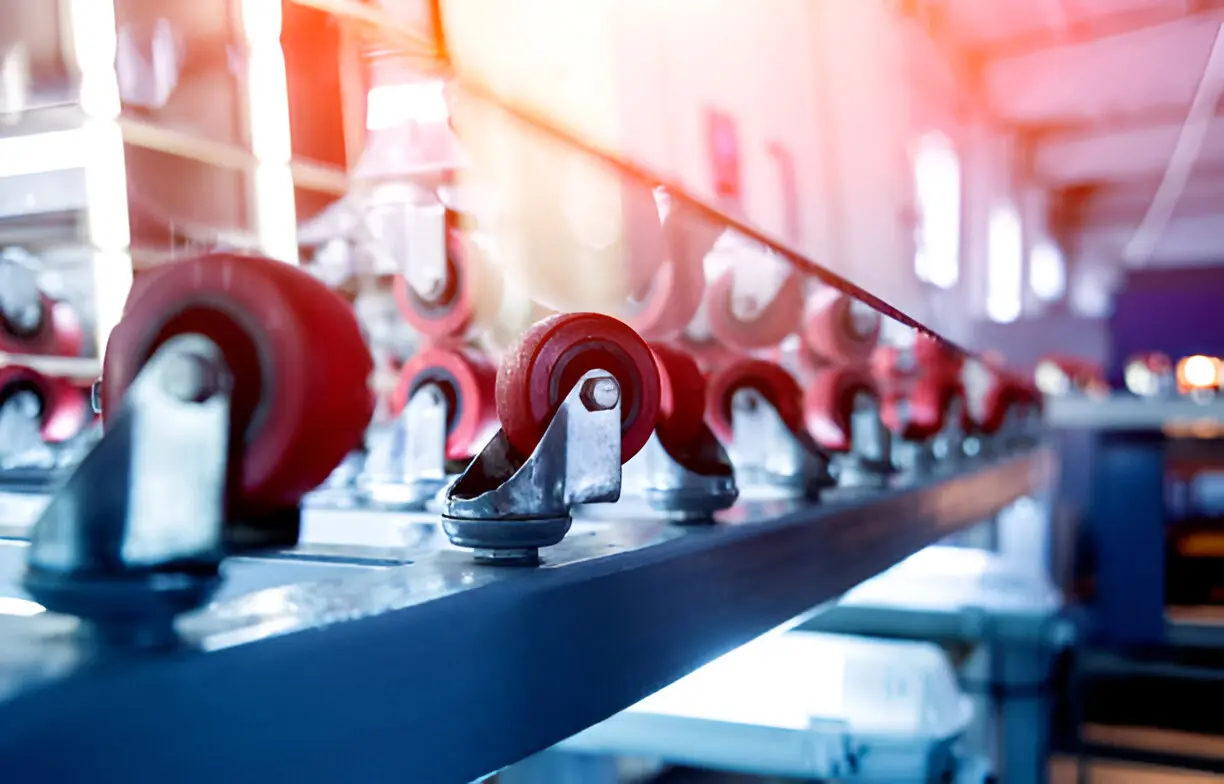Why Swivel Casters Matter in the Workplace
Mobility is a game-changer in nearly every sector. Moving heavy or sensitive equipment quickly and safely in massive distribution warehouses or busy hospital corridors is essential to smooth operations. With their 360-degree pivoting action, Swivel casters transform otherwise cumbersome equipment—think medical beds, tool cabinets, or retail displays—into agile, mobile assets. For staff, this means less lifting, reduced risk of back injuries, and more efficient task completion. The right tool box wheels push workers in the right direction, turning static storage units into maneuverable workstations and keeping tools at hand for technicians and craftspeople moving from task to task.
Swivel casters have revolutionized facility workflow strategies by allowing real-time layout adjustments, increasing order fulfillment speed and adaptability, and optimizing traffic flow. This benefits industries like maintenance, healthcare, and logistics, which rely on frequent, safe equipment relocation. It provides time savings and flexibility, reducing the need for rerouting or reorganizing inventory.
Types of Swivel Casters and Their Applications
Swivel casters are versatile and suitable for various environments, from office chairs to industrial carts. They come in multiple sizes, materials, and load capacities, making them ideal for different settings. Softer rubber or thermoplastic wheels are suitable for clean floors, while warehouses with rough terrain may require heavy-duty polyurethane or steel casters. Specialized facilities like medical and laboratory environments require antimicrobial, non-marking casters for cleanliness, while retailers and libraries need locking designs for display stability. Food processors often use stainless steel casters for high-humidity cleaning without corrosion. The proper caster match enhances equipment performance, preserves floors, and lowers long-term costs.
Reducing Injury and Improving Ergonomics
Swivel casters solve work-related musculoskeletal injuries, which are common in manual handling environments. They reduce the force needed to start, stop, and maneuver loaded carts or toolboxes, especially when equipped with sealed ball bearings and ergonomic treads. In healthcare, smoother rolling action prevents strains on shoulders, wrists, and backs. Casters with vibration-damping or shock-absorbing designs reduce jarring movements. Antimicrobial models in medical and food service environments minimize cross-contamination risk, promoting a healthier workspace. A holistic approach to caster selection considers ergonomics for workers and the environment, leading to fewer injuries, improved morale, and increased operational uptime.
The Role of Maintenance in Caster Performance.
Like any mechanical component, Swivell casters need consistent maintenance to deliver peak performance. Dirt, dust, and tangled debris can accumulate in wheels and bearing housings, increasing resistance and potential breakdowns. Regular maintenance ensures smooth operation and helps catch minor issues before they result in equipment downtime or workplace accidents. Key actions include:
- Scheduling monthly inspections for signs of wheel wear, cracks, or flat spots.
- Lubricating bearings and axles based on usage frequency and manufacturer guidelines.
- Ensure mounting bolts and hardware remain tight to prevent dangerous wobbling or misalignment.
- Promptly replacing damaged or excessively worn casters to prevent costly accidents or injuries.
Some organizations integrate caster inspections into routine equipment safety checks, making it easier to spot maintenance needs early. Proactive attention extends the lifespan of equipment, minimizes replacement costs, and ensures that vital tools and carts are ready whenever required.
How Swivel Casters Speed up Workflow
- Enables swift movement of inventory and equipment throughout facilities without the need for lifting equipment or additional workforce.
- Optimizes space utilization in crowded or frequently changing environments, such as retail backrooms and hospital wards.
- Promotes quick direction changes and precise positioning, improving efficiency in high-traffic areas.
- Eliminates time lost repositioning stationary objects or navigating around cluttered pathways.
Efficient movement in distribution centers and fulfillment warehouses is crucial for profitability. Quality swivel casters can reduce time and increase productivity. Precision casters in the hospitality sector facilitate seamless room service delivery, while easy book cart maneuverability benefits libraries. These small efficiency gains can significantly improve the pace and confidence of entire teams.
Best Practices for Installation and Use
- Calculate the maximum expected load and select casters that comfortably exceed this weight, adding a safety margin.
- Use a flat, solid surface for mounting to prevent warping and ensure an even, stable ride.
- Opt for lockable casters on equipment that may need to remain stationary, such as medical workstations or portable lab benches.
- Instruct personnel on proper use, including how to report loose or hard-to-move wheels.
- Match wheel material to flooring—using soft treads on tiles or rugged treads on carpet—to optimize durability and safety.
By setting precise installation and usage protocols, managers can prevent accidents often caused by overloaded or poorly installed casters. Training also helps staff notice and report early signs of caster wear, supporting a continuous cycle of preventive maintenance and operational excellence.
Innovations Shaping the Future of Material Handling
New technology transforms caster design, offering advanced tread materials for quieter operation, non-marking surfaces for floor protection, antimicrobial coatings for hygiene-sensitive sectors, and smart casters with built-in sensors for tracking usage and maintenance. These innovations meet demands for quieter hospitals, more flexible warehouses, and safer workplaces. The warehouse sector has adopted adjustable and modular caster systems, allowing managers to adapt workflows and layouts in real time, ensuring smooth operations despite frequent changes or growth.
Expert Tips for Choosing the Right Caster
There’s no one-size-fits-all approach to selecting casters. Facility managers and purchasing agents should ask a few crucial questions before making a decision:
- How much does the heaviest loaded cart or equipment piece weigh?
- How often will the casters be used during a typical day or shift?
- Is exposure to water, oil, chemicals, or extreme temperatures expected?
- Are special features necessary, such as locking mechanisms, vibration dampening, or noise reduction?
- What’s the predominant flooring type, and will it stand up to repeated caster traffic?
Addressing these questions ensures that the selected casters meet all functional, safety, and longevity needs. Involving frontline staff in decision-making also promotes buy-in and ensures their real-world challenges are factored into the final choice.
Staying Up-to-Date with Caster Safety Standards
The use of casters is constantly evolving, with new insights in industry safety resources helping businesses make informed choices about caster selection, installation, and maintenance. By monitoring these guidelines, companies can quickly adapt to best practices, protect their teams, and maintain compliance. Swivel casters significantly impact safety, speed, and team effectiveness, allowing organizations to unlock new levels of efficiency and reduce strain on employees.
Also Read-The Role Of Payroll Compliance In Business Success








